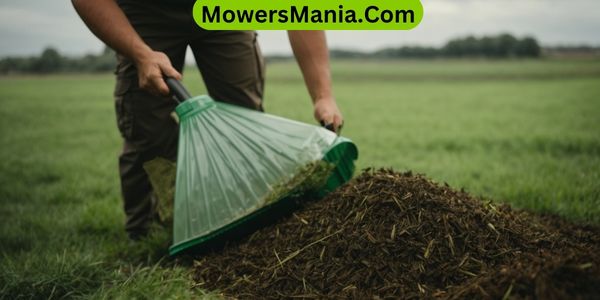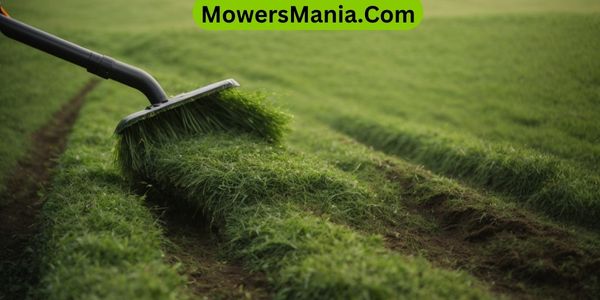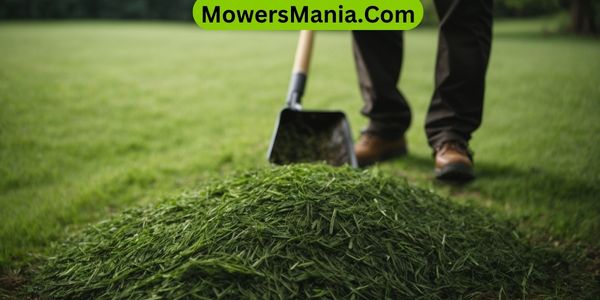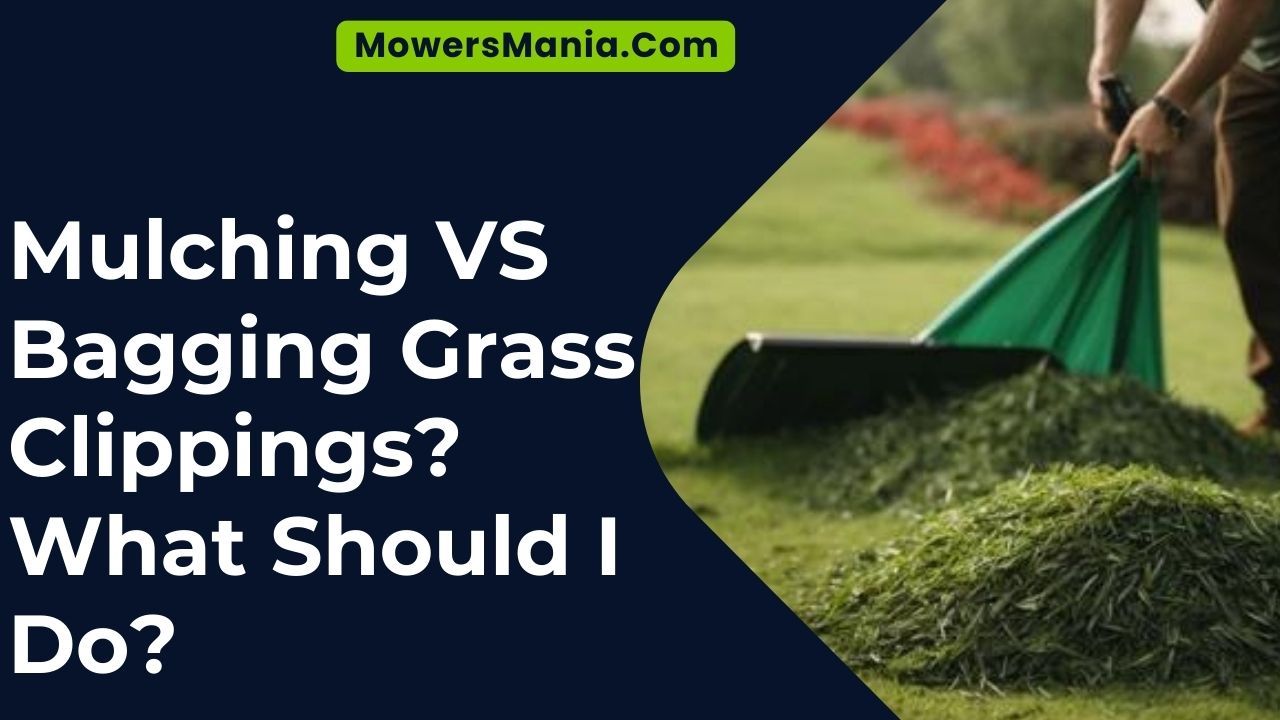Are you torn between mulching and bagging your yard waste? Don’t worry, we’ve got you covered. In this article, we’ll break down the benefits and drawbacks of both options.
We’ll also give you some factors to consider when making your decision. By the end, you’ll have all the information you need to choose whether to mulch or bag your yard waste.

So let’s dive in and find out what’s best for you!
Benefits Of Mulching
Mulching offers numerous advantages for your lawn and garden. By spreading a layer of mulch over the soil, you can retain moisture and prevent weed growth. This helps to keep your plants hydrated and healthy while reducing the need for frequent watering.
Mulching also acts as a natural insulation, protecting the roots of your plants from extreme temperatures. In the summer, it keeps the soil cool, and in the winter, it provides warmth.
Additionally, mulch helps to improve the fertility of your soil. As it breaks down over time, it adds organic matter to the soil, which promotes nutrient cycling and enhances the overall health of your plants.
Moreover, mulching reduces soil erosion by preventing rainwater from washing away the topsoil. It also acts as a protective barrier, preventing soil compaction caused by heavy rainfall or foot traffic.
With these benefits in mind, mulching is a cost-effective and sustainable way to maintain a vibrant and thriving lawn and garden.
Drawbacks Of Mulching
When it comes to mulching, there are a few drawbacks that you should be aware of.
One drawback is that mulching can lead to nutrient retention in the soil, which can affect the growth of your plants.
Another drawback is the potential for weed growth, as mulch can provide a favorable environment for weeds to thrive.
It’s important to consider these drawbacks before deciding whether mulching is the right choice for your garden.
Nutrient Retention In Soil
To maximize nutrient retention in your soil, be aware of the potential drawbacks of mulching. While mulching offers many benefits, such as weed suppression and moisture conservation, it also has its limitations.
One of the main concerns is that certain types of mulch can temporarily tie up nitrogen in the soil, making it less available to plants. This is especially true for fresh, untreated organic materials like wood chips or straw.
Additionally, if mulch is applied too thickly or too close to plant stems, it can create a barrier that prevents water and air from reaching the roots.
Therefore, it is important to choose the right type of mulch and apply it correctly to ensure optimal nutrient retention in your soil.
| Drawback | Description | Solution |
|---|---|---|
| Nitrogen tie-up | Certain mulches can temporarily decrease the availability of nitrogen in the soil. | Use composted or aged mulch to minimize nitrogen tie-up. |
| Root suffocation | Thick or improperly placed mulch can create a barrier that prevents water and air from reaching plant roots. | Apply mulch in a thin layer, leaving space around plant stems. |
| Pest attraction | Certain mulches can attract pests, such as slugs, snails, or rodents, which can damage plants. | Monitor for pests regularly and take appropriate measures, such as using organic pest control methods. |
| Nutrient imbalance | Mulch can alter the pH and nutrient balance of the soil, affecting plant growth. | Regularly test the soil and adjust nutrient levels accordingly. |
Potential Weed Growth
While mulching offers many benefits such as nutrient retention and moisture conservation, it can also lead to potential weed growth. Here are four reasons why mulching may contribute to weed growth:
To minimize potential weed growth, it’s crucial to regularly inspect and remove any emerging weeds, use a weed barrier under the mulch, and maintain an appropriate mulch thickness to allow sunlight penetration and discourage weed growth.
Benefits Of Bagging

Bagging your grass clippings offers several benefits for maintaining a healthy and aesthetically pleasing lawn.
One of the main advantages of bagging is that it helps prevent the accumulation of thatch. Thatch is a layer of dead grass stems, roots, and debris that can build up on the surface of your lawn over time.
This layer can become thick and compacted, preventing nutrients, water, and air from reaching the soil and the grassroots. By bagging your clippings, you remove this potential source of thatch and promote better nutrient absorption and root growth.
Another benefit of bagging is that it helps reduce the spread of diseases and pests. Grass clippings can harbor harmful fungi and insects that can attack your lawn and cause damage.
By bagging the clippings and removing them from your lawn, you decrease the chances of these pathogens and pests spreading and infesting other areas.
Furthermore, bagging your clippings can give your lawn a cleaner and more manicured appearance. The clippings can create a messy and unkempt look, especially if they’re left to accumulate. By bagging them, you can maintain a neat and tidy lawn that will enhance the overall aesthetic appeal of your outdoor space.
Drawbacks Of Bagging
If you frequently bag your grass clippings, you may notice that it requires additional time and effort to maintain your lawn. While bagging may have its benefits, it also comes with some drawbacks that you should consider.
Here are four reasons why bagging may not be the best option for you:
- Increased labor: Bagging grass clippings means you have to constantly stop and empty the bags. This can be time-consuming and tiring, especially if you have a large lawn.
- Disposal challenges: Once you’ve bagged the clippings, you’ll need to find a way to dispose of them. This can be a hassle, as some areas have restrictions on yard waste disposal or may charge additional fees for collection.
- Nutrient loss: When you bag the clippings, you’re removing valuable nutrients from the lawn. Grass clippings contain nitrogen, phosphorus, and potassium, which can help to fertilize your lawn naturally.
- Environmental impact: Bagging grass clippings contributes to landfill waste and increases carbon emissions from transportation. It’s not the most eco-friendly option compared to mulching.
Considering these drawbacks, you may want to explore mulching as an alternative. It’s a more efficient and sustainable method that can benefit both your lawn and the environment.
Factors to Consider
When deciding between mulching and bagging, there are several factors to consider.
- First, think about the environmental impact. Mulching allows grass clippings to decompose naturally, reducing waste and minimizing the need for chemical fertilizers.
- Second, consider nutrient retention. Mulching can help return valuable nutrients back to the soil, promoting a healthier lawn.
- Lastly, think about weed suppression. Mulching can help smother weeds and reduce the need for herbicides.
Environmental Impact
Considering the environmental impact is crucial when deciding between mulching and bagging your yard waste.
Here are four factors to consider:
Considering these factors, mulching can have a positive environmental impact by promoting nutrient cycling, water conservation, reducing carbon footprint, and supporting biodiversity.
Nutrient Retention
To retain nutrients in your yard, mulching is the recommended choice over bagging. When you bag your grass clippings, you remove a significant source of organic matter that can enrich the soil.
Grass clippings contain essential nutrients such as nitrogen, phosphorus, and potassium, which are vital for healthy plant growth.
By mulching your grass clippings instead of bagging them, you allow these nutrients to be recycled back into the soil. As the clippings decompose, they release their nutrients, providing a natural fertilizer for your lawn.
Additionally, mulching helps to retain moisture in the soil, reducing the need for frequent watering.
Weed Suppression
If you want to effectively suppress weeds in your yard, there are several factors you should consider.
Here’s what you need to know:
- Mulch type: Choose a mulch that’s effective in suppressing weeds. Organic mulches like wood chips or straw can smother weeds and prevent their growth.
- Mulch thickness: Apply a thick layer of mulch, around 2-4 inches, to effectively block sunlight and inhibit weed growth.
- Mulch maintenance: Regularly replenish mulch to ensure a consistent weed barrier. Mulch can break down over time, allowing weeds to penetrate.
- Weed prevention: Before applying mulch, remove existing weeds to prevent them from growing beneath the mulch layer.
Making Your Decision

When deciding between mulching and bagging, it’s important to weigh the benefits and drawbacks of each option. Mulching offers several advantages, such as providing nutrients to the soil, retaining moisture, and suppressing weeds.
On the other hand, bagging your grass clippings may seem like a hassle, but it has its own benefits. Bagging can give your lawn a cleaner appearance, prevent thatch buildup, and help control the spread of weeds and diseases.
To help you make an informed decision, here is a table summarizing the pros and cons of mulching and bagging:
| Mulching | Bagging |
|---|---|
| Nutrient-rich soil | Cleaner appearance |
| Retains moisture | Prevents thatch buildup |
| Suppresses weeds | Controls weed and disease spread |
Ultimately, the decision between mulching and bagging depends on your personal preferences and the specific needs of your lawn.
Consider factors such as the condition of your soil, the amount of time and effort you are willing to invest, and the aesthetic appeal you desire for your lawn.
By carefully evaluating these factors, you can choose the method that best suits your needs and helps you achieve a healthy and beautiful lawn.
Frequently Asked Questions [FAQs]
How Does Mulching Affect the Soil’s Moisture Retention?
Mulching, when done properly, can significantly improve soil moisture retention. It helps to regulate soil temperature, reduce evaporation, and suppress weed growth. This allows plants to access more water and nutrients, promoting healthier growth.
Can Mulching Help Control Weed Growth in My Garden?
Mulching can definitely help control weed growth in your garden. By adding a layer of mulch, you create a barrier that prevents weed seeds from germinating and also blocks sunlight, hindering weed growth.
Does Bagging Grass Clippings Contribute to Landfill Waste?
Yes, bagging grass clippings contributes to landfill waste. Instead, you can try mulching them, which helps recycle nutrients back into your lawn and reduces the amount of waste sent to landfills.
Are There Any Specific Grass Types That Benefit More From Mulching?
Some grass types benefit more from mulching than others. It depends on factors like the type of soil, climate, and grass species. Consider researching the specific grass type in your lawn to determine the best approach.
How Does Bagging Affect the Appearance of the Lawn Compared to Mulching?
Bagging affects the appearance of your lawn differently than mulching. When you bag the grass clippings, your lawn will look neater and more manicured. Mulching, on the other hand, leaves the clippings on the lawn for a more natural look.
Conclusion
In conclusion, when deciding between mulching and bagging, it’s important to consider your specific needs and preferences.
Mulching has benefits such as conserving moisture, improving soil health, and reducing weed growth. It helps to retain moisture in the soil, preventing it from evaporating too quickly and keeping the plants hydrated.
The organic matter from the mulch also adds nutrients to the soil, promoting healthy plant growth. Additionally, mulching acts as a natural weed barrier, preventing sunlight from reaching weed seeds and inhibiting their growth.
On the other hand, bagging can be advantageous for collecting debris and maintaining a pristine appearance. Bagging the grass clippings, leaves, and other yard waste can help keep the lawn looking neat and tidy. It also prevents the spread of weed seeds and disease organisms that may be present in the debris.
Ultimately, the choice depends on factors like the type of plants, lawn size, and personal preference. Some plants may benefit more from mulching, while others may require the removal of debris through bagging. The size of your lawn may also play a role, as bagging can be more time-consuming and labor-intensive for larger areas.
Consider your specific needs and the benefits of each method before making a decision. If you value water conservation, soil health, and natural weed control, mulching may be the best option for you. However, if you prioritize a pristine appearance and the removal of debris, bagging may be more suitable.
So, choose the method that suits your needs best and enjoy a well-maintained garden or lawn.



